Overview:
The capital markets are heading into the weekend mostly quietly in a consolidative fashion. Ambiguous signals from yesterday’s US equities saw a narrowly mixed performance among the large Asia Pacific bourses, but of note, Hong and China markets saw this week’s gains trimmed. Europe’s Stoxx 600 is up around 1% near midday and is slightly above last week’s close. US equity futures are trading with a firmer bias ahead of a large expiration of equity options today. Coming into today’s session the Nasdaq is up about 0.25% while the S&P 500 is down as much. The US 10-year yield is near 3.79%, a couple basis points firmer on the day, but off nearly seven basis points on the week. European yields are mostly 2-4 bp higher, though the 10-year Gilt is up about six basis points to pare this week’s decline to 10 bp. The dollar is softer against all the major currencies but consolidating. The New Zealand dollar is the strongest ahead of next week’s central bank meeting, where the sixth consecutive 50 bp hike is expected to be delivered. Emerging market currencies are mixed, with Hungary and China leading the advancers, while Turkey and Mexico are posted small declines to pace the losers. Gold has steadied after shedding a little more than 1% over the past two sessions. December WTI has barely stabilized after falling 4.6% yesterday and 1.5% on Wednesday. Concerns over demand are being held responsible for this week’s 8%+ decline. If sustained, it would be the largest weekly decline since August. US natgas is giving back yesterday’s 2.7% gain to snap a four-day advance. Europe’s benchmark is off 5.8% after a nearly 8% rally yesterday. Iron ore rose 1.4% today to put the final touches on its third consecutive weekly advance, spurred by hope that the last measures help China’s property market. December copper is softer and threatens to extend its pullback for the fifth consecutive session. It rose in the last four sessions last week. December wheat is up 1% after falling around 2.6% over the past two sessions. It is a couple of cents firmer for the week.
Asia Pacific
Japan's October consumer inflation rose more expected, but it will not lead to a change in the monetary stance as BOJ Governor Kuroda insists that price pressures will recede next year. Headline CPI rose to 3.7% from 3.0% from a year ago, while the core measure, which excludes fresh food rose to 3.6% from 3.0%. Still, price pressures are broadening. Excluding both fresh food and energy, prices rose 2.5% from a year ago, accelerating from 1.8%. On the month, the headline rate rose by 0.6%, as much as it did in the previous two months, while the core measure both including and excluding energy rose by 0.5%. Good prices rose by 0.9% in October and services prices rose by 0.3%. Goods and service prices were unchanged in August and September. The BOJ expects core CPI to fall to 1.6% in the next two fiscal years. The median forecast in Bloomberg's survey sees core CPI at 1.8% next year and 0.6% in 2024.
As the US, Europe, and Japan seek to strengthen their own semiconductor fabrication capacity, it risks reducing the economic significance of Taiwan. In response, Taiwan's government is proposing to expand tax breaks for corporate R&D and production of chips. Reaching a certain threshold of R&D could reduce the income tax by a quarter and reaching a set level of advanced equipment purchases could now take off another 5% from the tax bill. Estimates suggest Taiwan manufactures more than 90% of the world's most advanced chips for military and business.
The dollar is straddling the JPY140 level. It is in the narrowest range this month of a little less than one yen ahead of the North American session. The greenback has been moving sideways in its trough, capped in front of the week's high set Monday at JPY140.80. The week's low was set Tuesday slightly below JPY137.70 but has spent little time below JPY139 since then. The downside momentum has stalled, and with the momentum indicators and firmer US yields it appears to favor the dollar's upside next week. The Australian dollar is trading inside yesterday's range (about $0.6635-$0.6750). It is in a quarter-cent range on either side of $0.6700. Yesterday's pullback met the (38.2%) retracement of the rally since the November 10 low when the softer than expected US CPI was reported. We expect the week's high (about $0.6800) to hold before a deeper correction ensues. After gaining a little more than 1.5% against the Chinese yuan over the past two sessions, the dollar pulled back today to almost CNY7.11. Still, the greenback is holding on to a small gain for the week of about 0.2%. The PBOC set the dollar's reference rate at CNY7.1091 compared with the median projection in Bloomberg's survey of CNY7.1283. There were reports that state banks sold dollars today. Before the mainland markets open on Monday, the banks will set the loan prime rates. The PBOC's recent warning that the price pressures will rise with the economic recovery seems to lean against any lingering hope of a decline in rates.
Europe
As many had correctly anticipated, most of the fiscal austerity anticipated by the UK government has backloaded more than half of the fiscal pain until outlying years of the forecasting period (2027-2028). These seem to be the highlights. Most income tax thresholds (brackets) for two more years, which extend them through to April 2028 will see inflation push households into higher tax brackets. The exemption allowance on capital gains tax will be more than halved next year to GBP6k and halved again in fiscal 2024 to GBP3k. The tax-free allowance for dividend income will be cut to GBP1k next year and GBP500 the following year. The windfall tax on oil and gas companies will be increased to 35% from 25% and a new 45% tax will be levied on electricity generators. Welfare and state pensions will rise with inflation, and the minimum wage (national living wage) will be hiked by 9.7%, a record amount. The government plans to cap the unit price of gas and electricity will raise the average household bill to GBP3k rather than GBP2.5k. Separately, the surcharge on bank profits will be cut to 3% from 8%, which will minimize the impact of the corporate tax hike to 25% from 19% in April. It applies to profits in excess of GBP100 mln, which excludes small banks. Also, in one of the few Truss/Kwarteng measures retained, the cap on bankers' bonuses at twice the base pay, imposed by the EU in 2014 will be scrapped.
The impact growth next year and 2024 is seen a negligible (+0,1% and -0.1%, respectively). The drag intensifies as the austerity bites in the outer years, with a 0.4% headwind in 2025 and a 0.6% hit in 2027. The near-term outlook does not appear to deviate much from the BOE's neutral assumption this month's meeting. The market recognized this and the outlook for next month's meeting was little changed. The odds of a 75 bp increased from about 39% to about 47%. However, there was a more dramatic change in the confidence expressed in the swaps market that the terminal rate is closer to 4.75% than 4.50% in the middle of next year.
Separately, the UK reported October retail sales rose, excluding gasoline, rose 0.3%, or half of what was expected after a 1.5% decline in September that had been partly influenced by the Queen's memorial. Fuel sales rose 3.3% in October. The squeeze on household finances is evident and the sales of food and household goods fell, while new lines helped lift clothing sales. Next week's highlight is the preliminary November PMI. The composite has been below the 50 boom/bust level for three months and most likely remains there as the anticipated UK recession has begun.
Despite the hawkish comments from ECB President Lagarde, warning that rates may have to rise to restrict growth and emphasizing the outlook for inflation, the euro is trading quietly at little changed levels. It is consolidating within the range seen on Tuesday ( about $1.0280-$1.0480). Last week is settled slightly below $1.0350. We cautioned about chasing it higher after last week's surge, and although the pullback we anticipated did not materialize, we are still not convinced the risk/reward favors new longs. It looks to be the third session of lower highs, and we note that a large (2.7 bln euro) option that expires today is at $1.0450. Note that the European banks will make an early pre-payment of almost 300 bln euros of the TLTROs, which is around half of what the market had been anticipating and this saw some upward pressure on short-term rates. Sterling also remains within the range it set on Tuesday (about $1.1740-$1.2030). It has struggled since to rise above $1.1950. Sterling found support yesterday near $1.1765 and has not spent much time today below $1.1860. Of the G10 currencies, we have expressed the greatest confidence that sterling bottomed against the dollar with the capital strike at the end of September when it fell to around $1.0350. Here, too, though, the momentum indicators are stretched and given 16.2% recovery from the lows, we suspect a deeper pullback than we saw this week may still lie ahead.
America
St. Louis Fed President Bullard spooked the market by making a case that the restrictive zone for the policy rate is 5.0%-7.0%., using a derivative of the Taylor Rule. Still, he shied away from advocating it per se and said 5.00% to 5.25% is needed at a minimum. Bullard has been a leading hawkish voice at the Fed, though will lose his vote next year as the regional presidents take annual turns voting on the FOMC. Bullard's colleagues have generally caught up. The market has wavered recently between a terminal rate of 4.75% and 5.00%, with an occasional flirtation at 5.25%. The implied yield of the Fed futures for the middle of next year edged up to slightly more than 5% yesterday, having finished last week near 4.88%.
There was also some movement in the two spreads we are monitoring to see the peak and first cut. The timing of the peak is captured by the spread between the March and June 2023 contracts. After Bullard's comments, market expectations shifted more toward a Q2 peak. The implied yield of the June contract is 22 basis points below the March contract yield. At the end of last week, it was 15 bp. After the bevy of Fed comments, the market is more comfortable now with a hike in Q2 23. The spread that captures the market's expectation of the first cut next year is the difference between the September and December contracts. The yield of the December contract is 28.5 bp below the September contract, which is consistent with a cut late next year. The differential was at 32.5 bp on Tuesday and Wednesday and has been more than 25 bp since November 10 when the October CPI was reported slightly softer than expected. To be fair, it was 22 bp on November 9. We note that October existing home sales will be reported today, but do not expect much market impact. Existing home sales have fallen every month since January. The Fed's speaking calendar is light with Boston Fed Collins (voter) to speak before the equity market opens
Brazil's president-elect Lula is scaring investors. After seeking to exempt around BRL175 bln (about $32 bln) from the spending cap, he was quoted at COP27 that the government should start talking about "social responsibility rather than fiscal responsibility." Lula acknowledged the markets' reaction and seemed to dismiss it as a function of speculators. Nevertheless, after the dollar jumped to its highest level since January (about BRL5.53), a nearly 2.5% advance on the day, it reversed and fell to close the opening gap, dipping briefly through BRL5.40. It finished up about 0.25%. The real ended up performing better than most of Latam currencies yesterday but the Argentine peso and Peruvian sol. The Bovespa fell 0.65%, The Chilean and Peruvian equity markets lost more than 2%. Investors displeasure was seen in bond market. The 10-year dollar bond yield rose nearly 14 bp, more than twice Mexico's. On the other hand, the local currency bond yield edged up four basis points and was the region's best performer.
The intraday decline in US equities yesterday coincided with the US dollar rising to new highs for the week against the Canadian dollar. The CAD1.3400 high met the (50%) retracement objective of the greenback's slide since the softer than expected CPI on November 10, when it peaked near CAD1.3570. It found support earlier today near yesterday's low slightly above CAD1.3300. A convincing break could target CAD1.3200. That said, we suspect that CAD1.34 will be paid before it sees CAD1.3200, the key may be the performance of US equities. Meanwhile, the US dollar has remained within last Friday's range (about MXN19.2655-MXN19.59) all week and it looks to persist ahead of the weekend. Still, the greenback is making slightly higher lower and higher highs over the last few days. The path of least resistance may be to the dollar's topside.




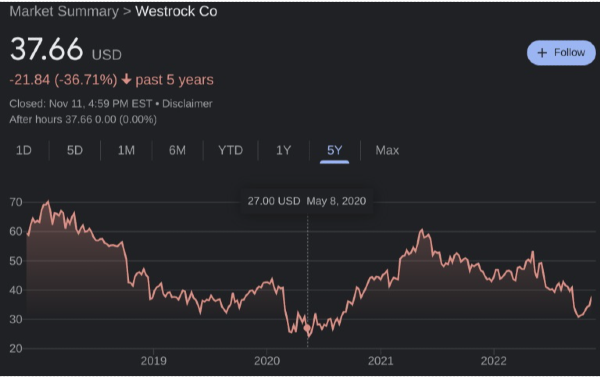

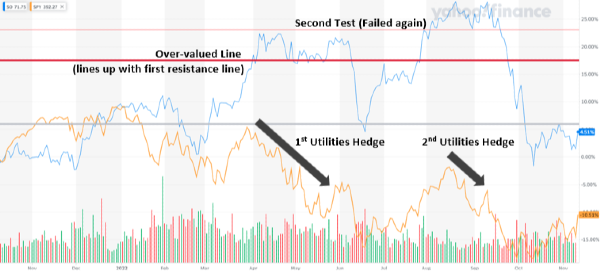


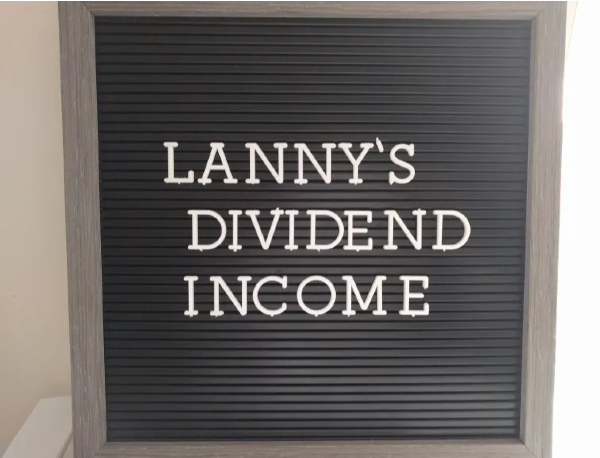

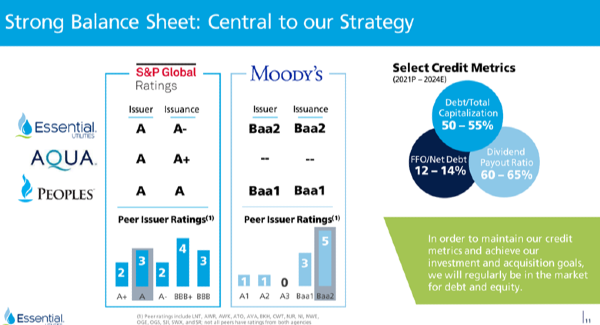


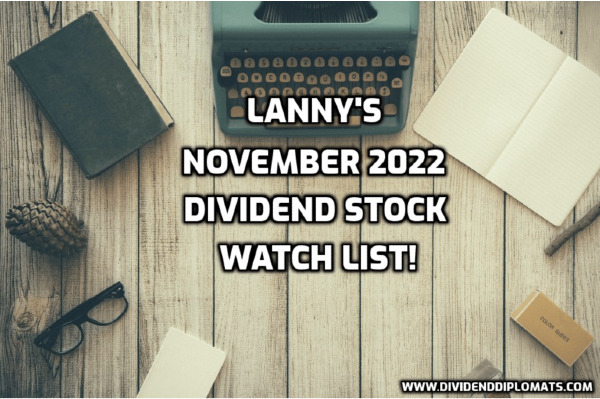

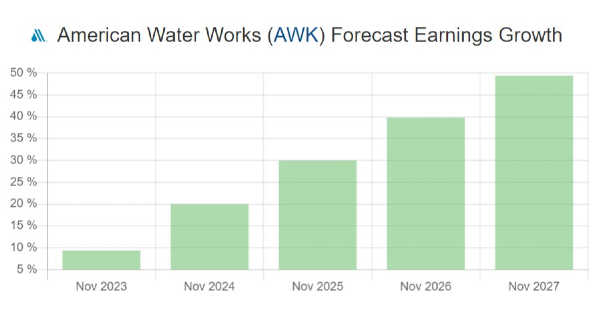
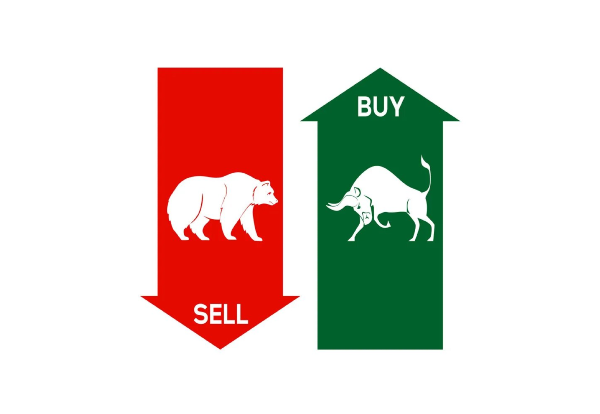










Overview:
The capital markets are heading into the weekend mostly quietly in a consolidative fashion. Ambiguous signals from yesterday’s US equities saw a narrowly mixed performance among the large Asia Pacific bourses, but of note, Hong and China markets saw this week’s gains trimmed. Europe’s Stoxx 600 is up around 1% near midday and is slightly above last week’s close. US equity futures are trading with a firmer bias ahead of a large expiration of equity options today. Coming into today’s session the Nasdaq is up about 0.25% while the S&P 500 is down as much. The US 10-year yield is near 3.79%, a couple basis points firmer on the day, but off nearly seven basis points on the week. European yields are mostly 2-4 bp higher, though the 10-year Gilt is up about six basis points to pare this week’s decline to 10 bp. The dollar is softer against all the major currencies but consolidating. The New Zealand dollar is the strongest ahead of next week’s central bank meeting, where the sixth consecutive 50 bp hike is expected to be delivered. Emerging market currencies are mixed, with Hungary and China leading the advancers, while Turkey and Mexico are posted small declines to pace the losers. Gold has steadied after shedding a little more than 1% over the past two sessions. December WTI has barely stabilized after falling 4.6% yesterday and 1.5% on Wednesday. Concerns over demand are being held responsible for this week’s 8%+ decline. If sustained, it would be the largest weekly decline since August. US natgas is giving back yesterday’s 2.7% gain to snap a four-day advance. Europe’s benchmark is off 5.8% after a nearly 8% rally yesterday. Iron ore rose 1.4% today to put the final touches on its third consecutive weekly advance, spurred by hope that the last measures help China’s property market. December copper is softer and threatens to extend its pullback for the fifth consecutive session. It rose in the last four sessions last week. December wheat is up 1% after falling around 2.6% over the past two sessions. It is a couple of cents firmer for the week.
Asia Pacific
Japan's October consumer inflation rose more expected, but it will not lead to a change in the monetary stance as BOJ Governor Kuroda insists that price pressures will recede next year. Headline CPI rose to 3.7% from 3.0% from a year ago, while the core measure, which excludes fresh food rose to 3.6% from 3.0%. Still, price pressures are broadening. Excluding both fresh food and energy, prices rose 2.5% from a year ago, accelerating from 1.8%. On the month, the headline rate rose by 0.6%, as much as it did in the previous two months, while the core measure both including and excluding energy rose by 0.5%. Good prices rose by 0.9% in October and services prices rose by 0.3%. Goods and service prices were unchanged in August and September. The BOJ expects core CPI to fall to 1.6% in the next two fiscal years. The median forecast in Bloomberg's survey sees core CPI at 1.8% next year and 0.6% in 2024.
As the US, Europe, and Japan seek to strengthen their own semiconductor fabrication capacity, it risks reducing the economic significance of Taiwan. In response, Taiwan's government is proposing to expand tax breaks for corporate R&D and production of chips. Reaching a certain threshold of R&D could reduce the income tax by a quarter and reaching a set level of advanced equipment purchases could now take off another 5% from the tax bill. Estimates suggest Taiwan manufactures more than 90% of the world's most advanced chips for military and business.
The dollar is straddling the JPY140 level. It is in the narrowest range this month of a little less than one yen ahead of the North American session. The greenback has been moving sideways in its trough, capped in front of the week's high set Monday at JPY140.80. The week's low was set Tuesday slightly below JPY137.70 but has spent little time below JPY139 since then. The downside momentum has stalled, and with the momentum indicators and firmer US yields it appears to favor the dollar's upside next week. The Australian dollar is trading inside yesterday's range (about $0.6635-$0.6750). It is in a quarter-cent range on either side of $0.6700. Yesterday's pullback met the (38.2%) retracement of the rally since the November 10 low when the softer than expected US CPI was reported. We expect the week's high (about $0.6800) to hold before a deeper correction ensues. After gaining a little more than 1.5% against the Chinese yuan over the past two sessions, the dollar pulled back today to almost CNY7.11. Still, the greenback is holding on to a small gain for the week of about 0.2%. The PBOC set the dollar's reference rate at CNY7.1091 compared with the median projection in Bloomberg's survey of CNY7.1283. There were reports that state banks sold dollars today. Before the mainland markets open on Monday, the banks will set the loan prime rates. The PBOC's recent warning that the price pressures will rise with the economic recovery seems to lean against any lingering hope of a decline in rates.
Europe
As many had correctly anticipated, most of the fiscal austerity anticipated by the UK government has backloaded more than half of the fiscal pain until outlying years of the forecasting period (2027-2028). These seem to be the highlights. Most income tax thresholds (brackets) for two more years, which extend them through to April 2028 will see inflation push households into higher tax brackets. The exemption allowance on capital gains tax will be more than halved next year to GBP6k and halved again in fiscal 2024 to GBP3k. The tax-free allowance for dividend income will be cut to GBP1k next year and GBP500 the following year. The windfall tax on oil and gas companies will be increased to 35% from 25% and a new 45% tax will be levied on electricity generators. Welfare and state pensions will rise with inflation, and the minimum wage (national living wage) will be hiked by 9.7%, a record amount. The government plans to cap the unit price of gas and electricity will raise the average household bill to GBP3k rather than GBP2.5k. Separately, the surcharge on bank profits will be cut to 3% from 8%, which will minimize the impact of the corporate tax hike to 25% from 19% in April. It applies to profits in excess of GBP100 mln, which excludes small banks. Also, in one of the few Truss/Kwarteng measures retained, the cap on bankers' bonuses at twice the base pay, imposed by the EU in 2014 will be scrapped.
The impact growth next year and 2024 is seen a negligible (+0,1% and -0.1%, respectively). The drag intensifies as the austerity bites in the outer years, with a 0.4% headwind in 2025 and a 0.6% hit in 2027. The near-term outlook does not appear to deviate much from the BOE's neutral assumption this month's meeting. The market recognized this and the outlook for next month's meeting was little changed. The odds of a 75 bp increased from about 39% to about 47%. However, there was a more dramatic change in the confidence expressed in the swaps market that the terminal rate is closer to 4.75% than 4.50% in the middle of next year.
Separately, the UK reported October retail sales rose, excluding gasoline, rose 0.3%, or half of what was expected after a 1.5% decline in September that had been partly influenced by the Queen's memorial. Fuel sales rose 3.3% in October. The squeeze on household finances is evident and the sales of food and household goods fell, while new lines helped lift clothing sales. Next week's highlight is the preliminary November PMI. The composite has been below the 50 boom/bust level for three months and most likely remains there as the anticipated UK recession has begun.
Despite the hawkish comments from ECB President Lagarde, warning that rates may have to rise to restrict growth and emphasizing the outlook for inflation, the euro is trading quietly at little changed levels. It is consolidating within the range seen on Tuesday ( about $1.0280-$1.0480). Last week is settled slightly below $1.0350. We cautioned about chasing it higher after last week's surge, and although the pullback we anticipated did not materialize, we are still not convinced the risk/reward favors new longs. It looks to be the third session of lower highs, and we note that a large (2.7 bln euro) option that expires today is at $1.0450. Note that the European banks will make an early pre-payment of almost 300 bln euros of the TLTROs, which is around half of what the market had been anticipating and this saw some upward pressure on short-term rates. Sterling also remains within the range it set on Tuesday (about $1.1740-$1.2030). It has struggled since to rise above $1.1950. Sterling found support yesterday near $1.1765 and has not spent much time today below $1.1860. Of the G10 currencies, we have expressed the greatest confidence that sterling bottomed against the dollar with the capital strike at the end of September when it fell to around $1.0350. Here, too, though, the momentum indicators are stretched and given 16.2% recovery from the lows, we suspect a deeper pullback than we saw this week may still lie ahead.
America
St. Louis Fed President Bullard spooked the market by making a case that the restrictive zone for the policy rate is 5.0%-7.0%., using a derivative of the Taylor Rule. Still, he shied away from advocating it per se and said 5.00% to 5.25% is needed at a minimum. Bullard has been a leading hawkish voice at the Fed, though will lose his vote next year as the regional presidents take annual turns voting on the FOMC. Bullard's colleagues have generally caught up. The market has wavered recently between a terminal rate of 4.75% and 5.00%, with an occasional flirtation at 5.25%. The implied yield of the Fed futures for the middle of next year edged up to slightly more than 5% yesterday, having finished last week near 4.88%.
There was also some movement in the two spreads we are monitoring to see the peak and first cut. The timing of the peak is captured by the spread between the March and June 2023 contracts. After Bullard's comments, market expectations shifted more toward a Q2 peak. The implied yield of the June contract is 22 basis points below the March contract yield. At the end of last week, it was 15 bp. After the bevy of Fed comments, the market is more comfortable now with a hike in Q2 23. The spread that captures the market's expectation of the first cut next year is the difference between the September and December contracts. The yield of the December contract is 28.5 bp below the September contract, which is consistent with a cut late next year. The differential was at 32.5 bp on Tuesday and Wednesday and has been more than 25 bp since November 10 when the October CPI was reported slightly softer than expected. To be fair, it was 22 bp on November 9. We note that October existing home sales will be reported today, but do not expect much market impact. Existing home sales have fallen every month since January. The Fed's speaking calendar is light with Boston Fed Collins (voter) to speak before the equity market opens
Brazil's president-elect Lula is scaring investors. After seeking to exempt around BRL175 bln (about $32 bln) from the spending cap, he was quoted at COP27 that the government should start talking about "social responsibility rather than fiscal responsibility." Lula acknowledged the markets' reaction and seemed to dismiss it as a function of speculators. Nevertheless, after the dollar jumped to its highest level since January (about BRL5.53), a nearly 2.5% advance on the day, it reversed and fell to close the opening gap, dipping briefly through BRL5.40. It finished up about 0.25%. The real ended up performing better than most of Latam currencies yesterday but the Argentine peso and Peruvian sol. The Bovespa fell 0.65%, The Chilean and Peruvian equity markets lost more than 2%. Investors displeasure was seen in bond market. The 10-year dollar bond yield rose nearly 14 bp, more than twice Mexico's. On the other hand, the local currency bond yield edged up four basis points and was the region's best performer.
The intraday decline in US equities yesterday coincided with the US dollar rising to new highs for the week against the Canadian dollar. The CAD1.3400 high met the (50%) retracement objective of the greenback's slide since the softer than expected CPI on November 10, when it peaked near CAD1.3570. It found support earlier today near yesterday's low slightly above CAD1.3300. A convincing break could target CAD1.3200. That said, we suspect that CAD1.34 will be paid before it sees CAD1.3200, the key may be the performance of US equities. Meanwhile, the US dollar has remained within last Friday's range (about MXN19.2655-MXN19.59) all week and it looks to persist ahead of the weekend. Still, the greenback is making slightly higher lower and higher highs over the last few days. The path of least resistance may be to the dollar's topside.
Originally Posted on marctomarket.com